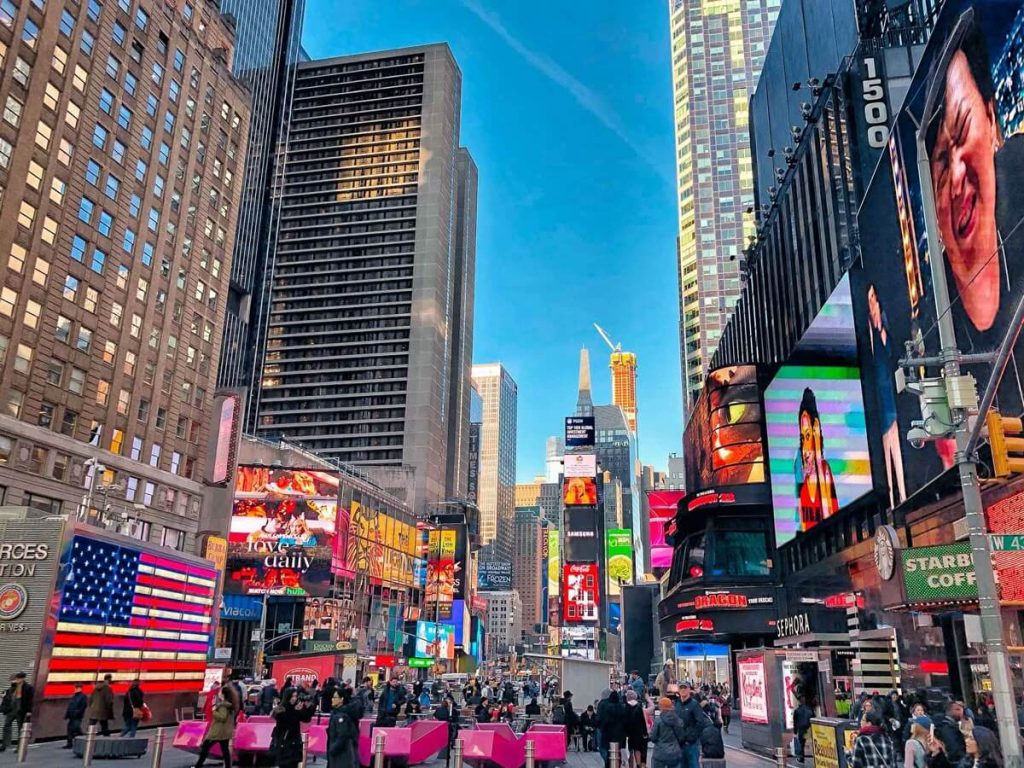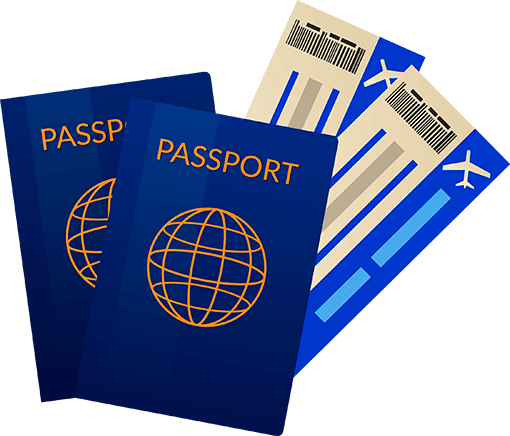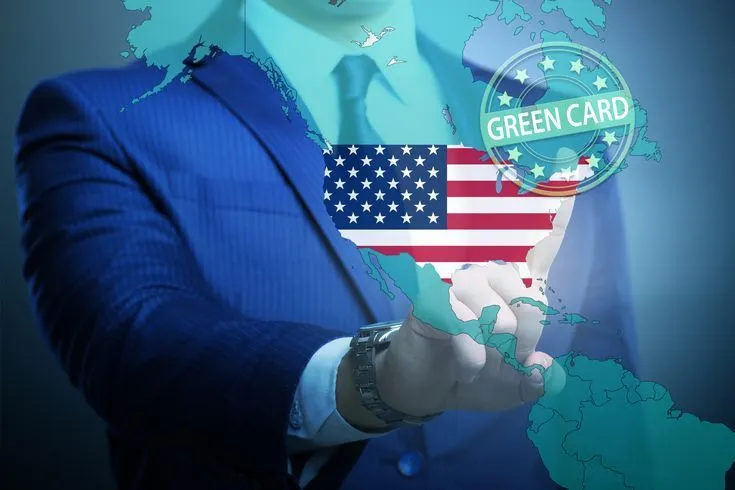Moving to the US for IT: Which Visa or Migration Program is Right for You? A Complete Guide

IT specialists are still) very much in demand and highly paid almost all over the world. And you also have a unique opportunity to work and live anywhere in the world. The United States is a country that offers maximum opportunities for realizing potential, which makes it so tempting for talented specialists. However, the US immigration system is not simple. In this guide, we will help you at least to start deciding on the direction in which you should move. And if you want to dive deeper, then start by following the links to official sites, visit our YouTube channel, where we share many videos on this topic. And when you figure it out, please) do not try to go this way alone – write to us, and we will help you do everything right.
Visas related to the IT sphere
In this section, we analyze visa options related to work in IT.
These visas can be divided into immigrant – provide an opportunity to obtain a green card, and non-immigrant – provide a temporary stay with an extension. Some of them require an employer in the United States. Others allow you to apply for a visa on your own.
EB-1A for outstanding specialists
This is a visa for people with outstanding abilities in their field of activity. It can be obtained by IT specialists with special achievements and contributions to the industry. International and national awards, publications in reputable publications, commercial success in IT, etc. are taken into account.
Visa type: immigrant. With this visa, you can apply for a green card. You will have the right to live and work in the United States without restrictions.
Link to the government website: https://www.uscis.gov/working-in-the-united-states/permanent-workers/employment-based-immigration-first-preference-eb-1
What opportunities does it provide: green card, the ability to move your family – spouses and children under 21, work in any company or open a business.
Who can get it: IT specialists with outstanding achievements.
Is an employer needed: no.
How to apply for a visa?The first step is to collect evidence of your achievements. It is important to prove that you meet at least 3 of the 10 criteria:
- prestigious awards in the IT field;
- participation in professional associations;
- publications about you in reputable publications;
- judging in competitions and reviewing scientific papers;
- contribution to innovation and the presence of patented technologies;
- high salary compared to other industry specialists;
- leadership in well-known companies;
- your author’s publications in specialized publications;
- participation in serious IT projects of the international level;
- successful startup or overall commercial success in IT.
The next step is to fill out and submit the I-140 petition. Once approved, you submit Form DS-260 if you are outside the United States. Then you just need to collect documents for the interview, have a successful conversation with the visa officer, and get a visa.
If you are already in America, then you submit Form I-485 to change your status. If the form is approved, you will receive a green card.
EB-2 NIW for talented specialists
This is a visa for talented experts who have an idea for a project in the IT field, the implementation of which can serve the national interests of the United States. The main task is to prove your value to the country.
Visa type: immigrant.
Link to the government website: https://www.uscis.gov/newsroom/alerts/uscis-updates-guidance-on-eb-2-national-interest-waiver-petitions
What opportunities does it provide: green card, the ability to move your family – spouses and children under 21, live and work in the United States without restrictions.
Who can get it: IT specialists with higher education or outstanding abilities and a project (business plan) in the national interests of the United States.
Is an employer needed: no.
How to apply for a visa? Evaluate whether you meet the criteria. For EB-2, you must have a higher education (master’s degree or higher) or exceptional ability (see the previous section).
The NIW (National Interest Waiver) criteria determine whether your project really meets the interests of the United States. To assess the US government, they use the three-factor Matter of Dhanasar test, which includes:
- the importance of the project. Your work must bring significant benefits to key areas of the United States – the economy, security, medicine, etc.;
- the level of qualification.It is important to prove that you are able to implement this project and achieve the stated results. Successful experience in previous IT companies may be taken into account, awards, availability of already implemented unique solutions;
- US interest.You need to show that having a sponsor (employer) is not necessary. Prove that you will bring more benefit to the US if you can work freely and develop your activities.
Collect all possible evidence that you meet these criteria. Then fill out and submit the I-140 petition. After its approval, submit the I-485 or DS-260 form. The final step is to pass the interview.
EB-2 for professionals with extraordinary abilities
Visa for professionals with higher education or exceptional skills.
Visa type: immigrant.
Link to government website: https://www.uscis.gov/working-in-the-united-states/permanent-workers/employment-based-immigration-second-preference-eb-2
What opportunities does it provide: green card, the ability to move your family, work for a specific employer with the right to change jobs.
Who can get it: IT specialist with higher education (master’s degree and above), with a bachelor’s degree + 5 years of work experience or exceptional abilities.
Do I need an employer: Yes.
How to apply for a visa? You must meet one of two criteria: higher education or exceptional ability. To prove exceptional ability, you must meet at least 3 of the following:
- a degree or other form of academic training related to your profession;
- at least 10 years of professional experience;
- certification or licensing in your field;
- membership in professional organizations, associations;
- high salary compared to other specialists;
- significant contribution to the industry.
If you meet the necessary criteria and can prove it, the next step is to find an employer in the United States. The employer must
pass PERM certification with the US Department of Labor and prove that there are no US candidates for the position.
Once PERM is approved, the process is standard. Completing and filing the I-140 petition. Once approved, filing the DS-260 or I-485, passing the interview, and receiving the visa/green card.
EB-3 for mid-skilled workers
This is a visa for workers with a mid-skill level, who do not have a master’s degree in their field, but have at least minimal work experience.
Visa type: immigrant.
Link to government website: https://www.uscis.gov/working-in-the-united-states/permanent-workers/employment-based-immigration-third-preference-eb-3
What opportunities does it provide: green card, the ability to move your family, long-term employment.
Who can get it: IT specialist with a bachelor’s degree. As well as qualified workers who have undergone special training and have at least 2 years of work experience.
Do you need an employer: Yes.
How to apply for a visa? For this visa, you only need to confirm your education or training and work experience. Then everything is the same as for EB-2. Find an employer. He undergoes PERM certification. Submit the I-140 petition. After its approval, submit I-485 or DS-260, pass the interview.
O-1 for people with extraordinary ability
A visa for people with extraordinary ability that does not lead to a green card. The requirements are similar to EB-1A, but less stringent.
Visa type: nonimmigrant. Valid for 3 years, renewable for 1 year. You can extend it an unlimited number of times.
Link to the government website: https://www.uscis.gov/working-in-the-united-states/temporary-workers/o-1-visa-individuals-with-extraordinary-ability-or-achievement
What opportunities does it provide:employment, the ability to move your family (without the right to work), the ability to change employers.
Who can get it: IT specialist with international or national achievements and recognition in the industry.
Is an employer needed: Yes. An agent can also be used instead of an employer. This could be a recruiting center, producer, manager.
How to apply for a visa? Collecting a list of achievements. You need to prove that you meet at least 3 of the 8 criteria:
- national or international awards;
- publications about you in major media;
- participation in prestigious organizations;
- recommendations from reputable experts;
- scientific publications;
- contribution to the development of the field;
- high salary;
- key role in well-known IT projects.
Have you scored 3 or more criteria and can prove them? Then you can move on. The next step is to find an employer or agent. Then the employer files the I-129 petition. Once approved, you fill out the DS-160, prepare documents, and go through an interview at the embassy.
L for executives and employees of international companies
The visa is suitable for executives, managers, and valuable employees of international IT companies. You must have a real operating office in the United States or plans to open one. The US office must be legally connected to the parent company as a branch, subsidiary, or affiliate.
Visa type: nonimmigrant. Valid for an average of 1-3 years, but there may be other terms.
Link to the government website: L-1A https://www.uscis.gov/working-in-the-united-states/temporary-workers/l-1b-intracompany-transferee-specialized-knowledge
What opportunities does it provide: employment, the opportunity to move your family with the right to work in the United States. With an L-1A visa, it is possible to apply for an EB-1C visa and convert it into a green card.
Who can get it: The L-1A visa is issued to managers and executives who have worked for the company for at least 1 year and receive a similar position in the American office. The L-1B visa is issued to employees who have unique and in-depth knowledge of the product, technology, and processes.
Is an employer required: Yes.
How to apply for a visa? The employer files Form I-129 with Supplement I-129L, as well as evidence of an office in the United States and your qualifications. Once approved, you complete Form DS-160, prepare documents, and go through an interview at the embassy.
H1-B for work of specialists with higher education
This is a work visa for foreign specialists who have a bachelor’s degree in the field of activity for which they plan to apply, as well as an offer from an employer in the United States.
Visa type: nonimmigrant. Valid for 3 years, with the possibility of extension up to 6 years maximum.
Link to the government website: https://www.uscis.gov/working-in-the-united-states/h-1b-specialty-occupations
What opportunities does it provide: employment, the opportunity to move your family with the right to live and study in the United States. In the future, you can apply for a green card by switching to EB-2 and EB-3 immigrant visas.
Who can get it: specialists with a bachelor’s degree or higher.
Is an employer needed: Yes.
How to apply for a visa? The first step is to find an employer willing to register you in the H-1B lottery. If your application is selected in the lottery, the employer files the I-129 petition.
They must also file an LCA with the U.S. Department of Labor stating that they are willing to pay a competitive wage. Along with this, the employer submits your employment contract and evidence of your qualifications.
Once your petition is approved, you complete the DS-160 and prepare for your interview.
Alternatives options
These are visas that are not directly related to the IT profession. They can be used by anyone who meets the criteria for receiving them. If you are serious about moving to the United States, we recommend that you consider all visa options.
Green Card Lottery (DV Lottery)
This is the easiest and most cost-effective way to obtain the right to immigrate to the United States. About 55 thousand green cards are raffled off in the DV Lottery annually.
To participate, 2 criteria are enough:
- be a citizen of a country with a low level of immigration to the United States. The list of countries whose citizens cannot participate in the lottery changes every year. You can check your country on the website https://travel.state.gov/content/travel.ht.
- have a completed secondary education (equivalent to 11th grade in the US) or at least 2 years of work experience in the last 5 years in an occupation that requires specialized knowledge.
You can check your occupation on the website https://www.onetonline.org/. It must be at least Job Zone 4 or 5 (SVP 7.0+).
As a rule, applications for participation in the lottery are submitted from October to November through the website https://dvprogram.state.gov/.
If you are married, we recommend submitting 2 applications – one from you and one from your spouse. This doubles your chances. If one of you gets a green card, the other will be an additional applicant in the case.
The results of the lottery are published in May. It is important to monitor the results on the website yourself – no one reports them in person.
Winning the lottery does not guarantee immigration. If your application is selected, you will have to submit documents for a visa and have an interview with a visa officer. Only there will you receive a final verdict – whether your immigration is approved or not.
F-1 Student Visa
This is a non-immigrant visa for students who are applying to study in the United States. It is valid for the entire period of study. As a rule, F-1 visas are obtained by students:
- US colleges and universities;
- private high schools;
- academic language courses;
- music schools, art academies, conservatories.
Before admission, we recommend checking whether your educational institution gives the right to a visa. This can be done on the website https://studyinthestates.dhs.gov/school-search.
To apply for a visa, you need to receive an invitation from the university and form I-20, and then fill out and submit form DS-160. After its approval, we collect documents and go through an interview with a visa officer.
Family Reunification
This is the most reliable path to a green card if your immediate relative is a U.S. citizen or green card holder. The visa category available to you depends on the degree of your relationship.
Family reunificationwith a U.S. citizen can immigrate to:
- spouses;
- fiancée or fiancée;
- minor children under 21;
- married and unmarried adult children are different visa categories with different waiting periods;
- parents of a U.S. citizen, if he or she has reached the age of 21;
- sibling.
By family reunification with a green card holder the following can immigrate:
- spouses and
- children under 21;
- unmarried children over 21.
A family visa is processed in stages. First, your sponsor (relative in the US) files an I-130 petition. It is reviewed by USCIS. If there are no questions, the petition and documents are transferred to the National Visa Center.
After their approval, you fill out the DS-260 form and submit a package of documents to the embassy. The final step is an interview with a visa officer.
Immigration to the US is one of the most difficult in the world. The slightest mistake or inaccuracy delays the process and leads to a refusal. If you are not ready to experiment and want to increase your chances from the start, enlist the support of our immigration lawyers.
Need a consultation on visa issues? Discuss them with an immigration lawyer
Leave a request, and we will contact you shortly

Read more

Here’s how to use social media for U.S. immigration

How the US Green Card Lottery Works: A Step-by-Step Plan for Participants and Winners


